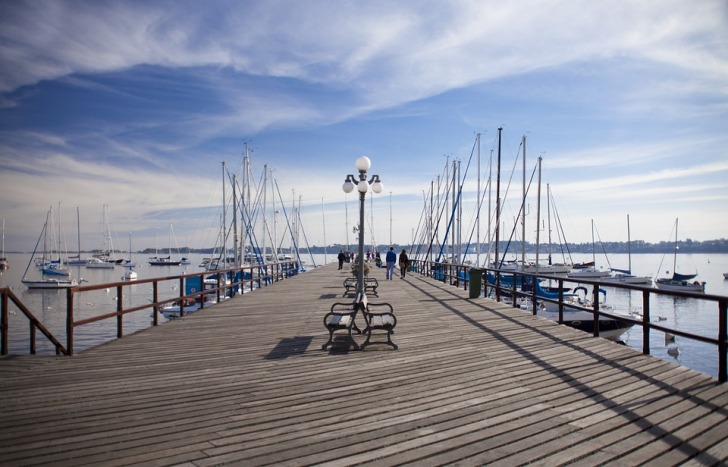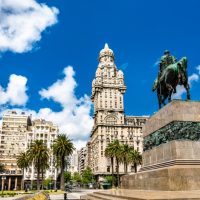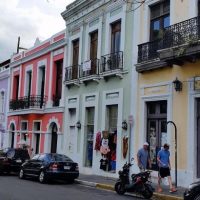Nestled between Brazil and Argentina, on the east coast of South America, is a little country called Uruguay.
Known for its beautiful weather, breathtaking views, and friendly people, Uruguay consistently ranks one of the safest countries in the world on the Global Peace Index.
Uruguay’s strong economic policies, stable democracy, and universal healthcare system have all positively impacted the health and safety of its residents and visitors.
While crime is higher in Uruguay’s suburban regions, the overall crime rate is relatively low.
Its 2020 crime rate was 9.70, an almost 15% decrease from 2019.
Its nearly 3.8 million residents have often been described as “muy tranquilo,” Latin for very calm.
Uruguayans value a more slow-paced life, where they can commune with nature.
They welcome tourists to their country and are eager to share their country’s most time-honored traditions.
If you’re wondering which Uruguayan cities are the safest to visit, stick around.
In addition to the 10 safest cities in Uruguay, we will also cover the nation’s top attractions, and some tips to keep you safe in your travels.

Contents
1. Punta del Este
Punta del Este is a prestigious beach community, known for its pristine beaches and flower-lined roadways.
With a population of 25,000, Punta is often referred to as the Saint-Tropez of Uruguay.
This playground for the rich has been attracting celebrities for decades.
Punta is a safe haven for many – a place where the rich and famous can vacation without the everyday media battles they face elsewhere.
Punta del Este is the most expensive city to visit in Uruguay.
It is also considered the safest.
If you want to visit a city with culture, history, and outdoor activities, Punta del Este should be at the top of your list.
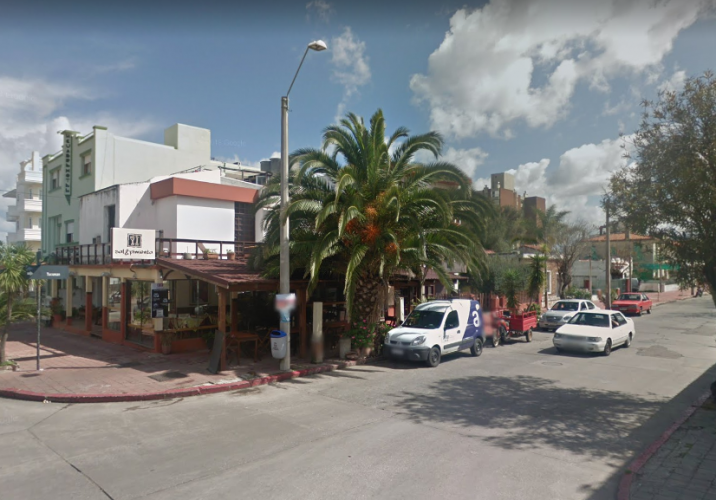
2. Piriapolis
If you’re looking to vacation in a small beach town with stunning views everywhere you look, make sure Piriapolis is on your list.
Founded in 1890, Piriapolis’ original design plans followed the principles of Kabbalah and Alchemy.
Piriapolis has a Mediterranean feel, with long, pristine beaches and mountainous hills.
It is the perfect place to take a relaxing stroll, whether on the promenade or among the statues in one of the town’s gardens.
With only 3,500 residents, the town of Piriapolis is a small beach community that relies on tourism.
They take pride in their homes and work hard to keep the area clean and safe.

3. La Paloma
Another small beach town in Uruguay worth visiting is La Paloma.
Situated on the coast of the Atlantic Ocean, this region is still largely underdeveloped.
It offers some of the most picturesque views in the country, with grey-sand beaches, blue-green water, and mountainous backdrops.
The stunning views and laid-back atmosphere make this a popular vacation destination for South Americans.
While La Paloma has a population of 3,500, those numbers increase dramatically in the summer.
The safest time to visit the area is after the summer months when travelers head home and La Paloma turns back into a sleep beach resort.

4. Tacuarembo
Tacuarembo, located in the Northern Interior of Uruguay, is a thriving city surrounded by rolling hills.
Often referred to as “the heart of the country”, the region is shaped like a heart and offers many natural wonders around every corner.
Tacuarembo’s inhabitants live, eat, and breathe the Gaucho culture, so there are cowboy undertones in everything they do.
Legend has it that renowned tango star Carlos Gardel was born in the area – a claim to fame residents embrace.
Uruguayans are proud of their culture and history, and residents of this region are no exception.
They are friendly and eager to share their story with tourists.
Like most of Uruguay, Tacuarembo is safe to visit.
Tourists are encouraged to keep valuables locked up and discouraged from walking alone at night.

5. Colonia del Sacramento
Founded in 1680, Colonia del Sacramento is Uruguay’s oldest city.
Many battles were fought between the Portuguese and Spanish over who ruled this region.
As a result, Colonia boasts an eclectic mix of architectural styles.
Its historic town center still paved with cobblestone streets, is a UNESCO World Heritage site.
Colonia del Sacramento lies next to the Río de la Plata and is widely known for its ferry terminal.
In just over an hour, you can be dining and shopping in Argentina’s capital Buenos Aires.
Colonia is also known for its free-trade zone commercial park.
Here, Buenos Aires’ businessmen have set up their free-trade zone production facilities.
This international activity, along with Colonia’s proximity to Buenos Aires, has resulted in an increase in street crime.
Visitors are encouraged to be aware of their surroundings, particularly when exploring at night.
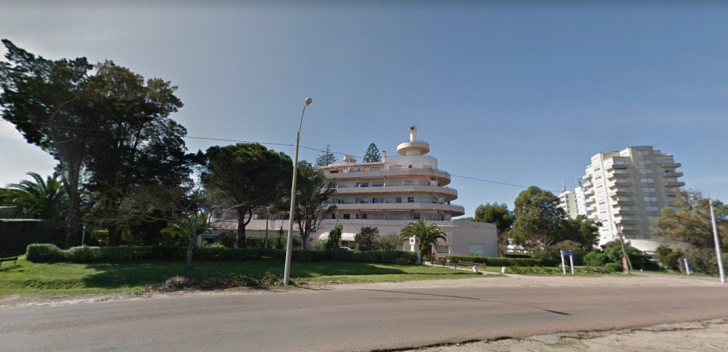
6. Atlantida
If you’re looking for unique and charming, look no further than Atlantida.
Less than 30 miles from Uruguay’s capital, Montevideo, Atlantida is one of the most family-friendly towns in Uruguay.
Atlantida has all the amenities of a beach resort town.
Its golden-sand beaches are lined with white pines and the atmosphere is laid back.
It features unique attractions, like the house shaped like an eagle’s head, a tiny zoo, and another UNESCO World Heritage site, the Cristo Obrero Church.
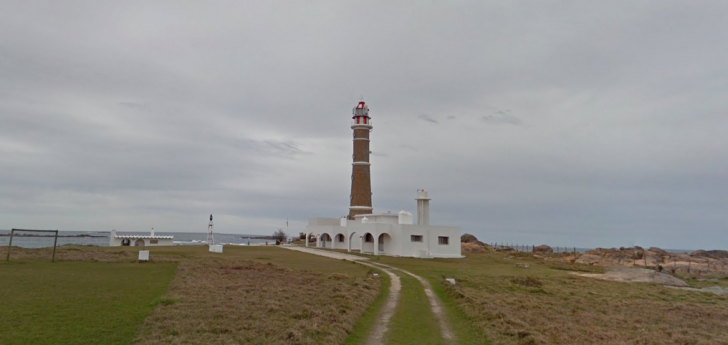
7. Cabo Polonio
Another one of Uruguay’s safest towns is Cabo Polonio.
Located on the eastern coast, this remote town is surrounded by beaches, lagoons, and dunes.
There are no roads leading into Cabo Polonio, and most of the homes lack running water and electricity.
Evenings are particularly special, as candles and streetlamps illuminate the way.
To reach Cabo Polonio, you’ll need a 4 x 4 vehicle or a horse.
The only other way to get there is by walking nearly 4 miles over sand dunes.
While we believe this adds to the town’s charm, it does limit the number and types of people visiting the area.
As a result, residents enjoy a very low crime rate.
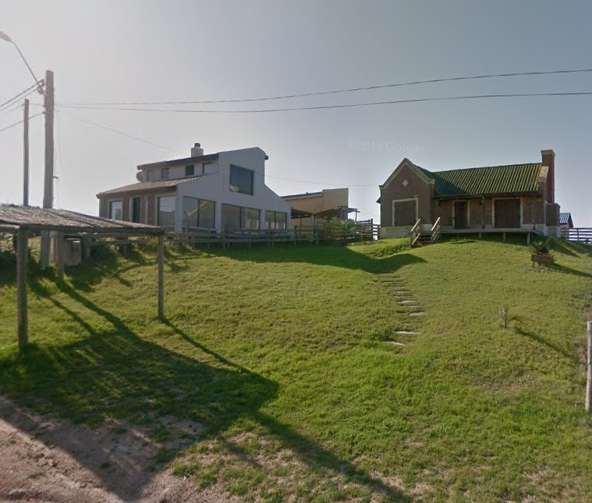
8. Punta del Diablo
Punta del Diablo is a popular vacation destination for Uruguayans.
While a bit more developed than other spots on our list, this town is still a safe and laid-back place to visit.
From dining on local seafood to dune boarding and horseback riding, Punta del Diablo offers a unique experience, without the hassles that come with being in a big city.

9. Maldonado
If you prefer the big city, without all the flash and street crime, Maldonado has you covered.
This town of 70,000 people has a unique mixture of architectural styles and stunning beach views.
Maldonado is ideally located for water sports activities.
The Punta del Este Peninsula delivers two unique beaches, the Brava Beaches for surfing and fishing and the Mansa Beaches for swimming and boating.
Crime is a bit higher than in some of the country’s smaller cities.
Visitors should be cautious if walking alone at night and be aware of their surroundings at all times.

10. Montevideo
Uruguay’s capital, Montevideo, is a city rich in culture and history.
Art Deco, Neoclassical and modern buildings are intermixed, making it an art enthusiast’s playground.
Whether you enjoy theater productions, museums, or music, there’s something for everyone in this spirited city.
While Montevideo is an urban center, with nearly half of Uruguay’s population living there, it does not have that big-city feel.
Street markets, known to the locals as ferias, line the shaded streets.
It rests right on the Río de la Plata and boasts multiple large green spaces, offering unique opportunities to get outside and enjoy nature.
Despite its lack of urban feel, visitors should use caution when exploring the area.
To avoid being a victim of street crime in Montevideo, keep your valuables secure and be aware of your surroundings at all times.
Common sense and awareness are all that is necessary to stay safe in the 46th safest country in the world.
3 Safety Tips for Traveling to Uruguay
Uruguay welcomes over 3 million travelers annually.
While it is a relatively safe travel destination, there are some things you can do to help ensure your safety.
- Keep your money safe – Get to know the official currency of Uruguay and how it is used. Never count your money in public. Pay attention when completing transactions to avoid being shortchanged.
- Keep your valuables safe – Uruguayan thieves work mostly on foot. Be aware of your surroundings and hold your valuables close. Lock your rental car’s doors and store everything out of sight. While Uruguayans are notoriously friendly, they are also reserved. Be leery of overly-friendly strangers.
- Move in groups – Uruguay has a healthy nightlife that does not even get started until 2:00 a.m. It is recommended that you avoid walking alone at night. Instead, travel in groups or hire a remise service to take you home.
Uruguay Safety Overview
READ THE FULL REPORT: Uruguay Safety Review
Safety Index:
- OVERALL RISK: LOW
- TRANSPORT & TAXIS RISK: LOW
- PICKPOCKETS RISK: LOW
- NATURAL DISASTERS RISK: MEDIUM
- MUGGING RISK: LOW
- TERRORISM RISK: LOW
- SCAMS RISK: LOW
- WOMEN TRAVELERS RISK: LOW
Frequently Asked Questions
Do They Speak English in Uruguay?
Spanish is the official language of Uruguay.
Most Uruguayans speak only their native language, so visitors will need to learn some basic Spanish or hire an interpreter.
Is the Tap Water in Uruguay Safe for Drinking?
Uruguay’s water supply meets World Health Organization’s standards and is the first South American country to offer safe, drinkable water to almost all of its residents.
Can I Catch Any Diseases From Visiting Uruguay?
Dengue fever is common in many South American countries.
As a result, the Uruguayan government is vigilant about preventing the spread of the disease to local mosquitoes. I
n the rare case that an infected person enters the country, they are quarantined until they are no longer contagious.
